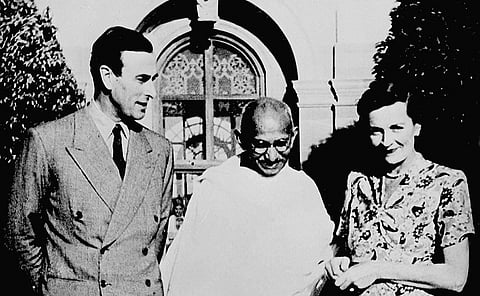

In popular perception, Gandhian economics has been reduced to swadeshi, khadi, self-reliance and self-sufficiency, small-scale and village industries, Sarvodaya, non-materialism and sundry other items. Mahatma Gandhi wrote a lot. Therefore, it is always possible to find a quote, such as from “Hind Swaraj”, to straitjacket Gandhiji’s views and even ridicule them. There can be quotes on railways or machinery from “Hind Swaraj”. “Hind Swaraj” was written in 1908. There was a context. Mahatma Gandhi could also be inconsistent.
I think reducing Gandhiji’s views to stereotypes misses the point. Mahatma Gandhi spoke of Ramarajya and he was deeply steeped in Hindu dharma. There are four yugas in a mahayuga cycle – satya/krita yuga, treta yuga, dvapara yuga and kali yuga. As one goes down the cycle, dharma progressively declines, by a quarter. In satya yuga, people were naturally virtuous. There was no need for kings, counterparts of today’s State. Kings were required to punish the wicked and protect the virtuous. Therefore, in satya yuga, the State was dysfunctional. Strictly speaking, Rama was from treta yuga. However, if one reads descriptions of the kingdom when Rama ruled, people were naturally prone to dharma. In other words, the treta yuga of Ramarajya approximated satya yuga. That’s the reason Gandhiji’s exhortations were moral ones, they did not involve the heavy hand of the State and rule of law. The State is an external carrot or stick. Swadeshi, khadi, self-reliance and self-sufficiency, small-scale and village industries were internal voluntary principles. They didn’t require the external carrot or stick. Living, speaking and writing in kali yuga, Mahatma Gandhi was reminding us of an ideal satya yuga, where the State becomes redundant.
Every society has a governance structure, a system of decision-making and resource allocation. Though no ideal capitalism exists anywhere in the world, that template leaves everything to the market, that is, the individual. Though no ideal socialism/communism exists anywhere in the world, that template leaves everything to the State. Our texts describe and prescribe a different template. Some decisions are taken by king/State, some by the individual/household, but a large number are also taken by the community. Hinduism has a third template, one that isn’t socialism and one that isn’t capitalism. MRP (maximum retail price), skill development, clamping down on unfair and restrictive business practices didn’t require State intervention. These were done by shrenis, one instance of community action. Ishta (sacrifices) and purti (civic works) were done both by the community and the individual. This explains the community-driven emphasis on self-reliance, self-sufficiency, villages and rural industrialization. Add to that the individual’s dharma, also described in the texts. Dana (donations) were natural, they didn’t require the stick of corporate social responsibility (CSR). Moksha (emancipation) is for exceptional people. For ordinary individuals, the texts prescribe a right balance between the three other human objectives (purusharthas) of dharma, artha and kama. I don’t think it is possible to understand Gandhiji’s beliefs without also being immersed in dharma. Those who equated his views with State intervention sought to exorcise dharma and have also misrepresented him.
(Bibek Debroy is an Indian economist and author with significant contributions to game theory, economic theory, income and social inequalities, poverty, among others. He is currently serving as the Chairman of the Economic Advisory Council to the Prime Minister (EAC-PM). From its inception in January 2015, till June 2019, Debroy was a member of the NITI Aayog, the think tank of Indian Government. Debroy translated the unabridged version of Mahabharata into English, becoming only the third person ever to achieve the feat. He has also translated the Bhagavad Gita, the Harivamsa, the Vedas and the Valmiki Ramayana. He has translated the Bhagavata Purana. He has featured in the 2019 Limca Book of Records as a "most prolific translator")
